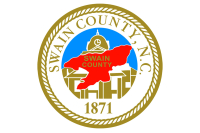Macon, Jackson to receive more opioid settlement funds
 The opioid epidemic has taken the lives of more than 37,000 North Carolinians since 2000.
The opioid epidemic has taken the lives of more than 37,000 North Carolinians since 2000.
Macon and Jackson County commissions signed resolutions this month enabling the governments to receive funding from the Kroger opioid settlement, the third settlement of its kind for both counties.
The national grocery store chain agreed to pay $1.2 billion to states, local governments and Native American tribes in September of last year to settle claims that its own pharmacies played a role in fueling the opioid crisis. Approximately $40 million is expected for North Carolina.
The resolution signed by both counties to receive the settlement funds notes that the “opioid overdose epidemic has taken the lives of more than 37,000 North Carolinians since 2000.”
In 2021 alone, there were 22 people who died from an overdose in Jackson County and the Centers for Disease Control and Prevention estimates the total economic burden of prescription opioid misuse in the United States is $78.5 billion a year.
The first round of settlement funds provided the most significant amount to local governments with both Jackson and Macon counties receiving approximately $3 million dollars over the course of 18 installments in as many years.
This latest round of funding from the Kroger settlement will provide far less, with Macon County set to receive just under $160,000 over the next 11 years.
Related Items
Because the money provided through the settlements is not enough for individual counties to take on large scale projects, municipalities in Western Carolina have discussed a collaborative effort to construct a regional treatment facility.
At the Jackson Commission’s July 9 work session, Tanya Snyder presented information about the opioid settlement planning process on behalf of the Southwestern Commission. Together, the seven western counties and the Eastern Band of Cherokee Indians that make up region A are set to receive about $18 million in settlement funding.
“All seven counties collectively decided to go through some regional planning because while $18 million sounds like a lot of money, we felt like there’s an opportunity to leverage that fund if we are working together with other communities and other counties,” said Snyder. “We decided to come together and say ‘what’s going on in the opioid world? What do we need to do? What are the opportunities? What are the gaps? Are there any overlaps where we can work together?’”
So far, the project managers hired to work on the opioid settlement planning contracted with Omni Institute out of Denver, Colorado to complete a strengths and needs assessment.
“We did that on a county level, so we started in every single individual county all seven counties and then the idea was once we see what’s going on in all seven counties, we’ll map that and see kind of where we are as a region and if there are any opportunities for us to combine our funding,” said Snyder.
Snyder explained to the Jackson County Commission that while one county alone may not have enough money over the years to create a facility, if several counties worked together with combined funding, there may be the opportunity for a regional facility.
Following the needs assessment, project managers are now working to create a strategic plan and implementation plan that they hope will be completed by the end of August. Even after both of these plans are completed, counties are not obligated to take part in a regional effort and could still use their individual funding on a county level.
“Through the [needs assessment] survey, we heard over and over again for Jackson County responses that supporting treatment and recovery was the number one priority,” Snyder said.
Planning efforts in Jackson County have identified the top three priorities for opioid settlement funding as recovery support services, post-overdose response teams and naloxone distribution.
There may be more settlements coming down the line through which counties and municipalities receive similarly low levels of funding, all of which must be maintained in a special fund. Counties and municipalities are required to follow specific guidelines for spending and reporting the settlement money.
There are two broad options counties can choose for allocating the money. Under the first option, local governments may fund one or more strategies from a short list of evidence-based, high impact strategies that have been proven to address the epidemic. Under the second option, local governments can engage in a collaborative strategic planning process involving a diverse array of stakeholders and then has the opportunity to fund a broader array of strategies.
According to Snyder, 77 local governments in North Carolina have already chosen the first option, with only nine choosing the second option. The seven western counties are among those who have not yet officially decided how to spend the settlement funding.













